Brand new from HWS is this m1895 Nagant - gas seal revolver
1.IntroThe Nagant M1895 Revolver is a seven-shot, gas-seal revolver designed by Belgian industrialist Léon Nagant for the Russian Empire.
The Nagant M1895 was chambered for a proprietary cartridge, 7.62×38mmR, and featured an unusual "gas-seal" system, in which the cylinder moved forward when the gun was cocked, to close the gap between the cylinder and the barrel, providing a boost to the muzzle velocity of the bullet and allowing the weapon to be suppressed (an unusual characteristic for a revolver).
The Nagant brothers were well known in the Russian Tsar's court and military administration The Nagant M1895 was adopted as the standard issue side arm for the Imperial Russian Army and police officers.Production began in Liège, Belgium; however Russia purchased the manufacturing rights in 1898, and moved production to the Tula Arsenal in Russia, and was soon producing 20,000 examples per year.
Until 1918 it was produced in two versions: a double-action version for officers, and a cheaper single-action version for the lower ranks. It continued to be used after the Russian Revolution by the Red Army and Soviet security forces. The distinctive shape and name helped it achieve cult status in Russia and in the early 1930s the presentation of a Nagant M1895 revolver with an embossed Red Star was one of the greatest honors that could be bestowed on a Party Member.
As early as 1933 the M1895 had started to be replaced by the Tokarev semi-automatic pistol but was never fully replaced until the Makarov pistol in 1952. It was still produced and used in great numbers during World War II and remained in use with the Russian Railways, postal service, and some remote police forces for many years. In the Russian Federation, it was retired from use with postal security service in 2003, and from bailiff security service in 2009.
Technical characteristics
Revolvers typically have a small gap between the cylinder and the barrel to allow the cylinder to revolve. The bullet must "jump" this gap when fired, which can have an adverse effect on accuracy, especially if the barrel and chamber are misaligned. The gap also is a path for the escape of high pressure hot gases.
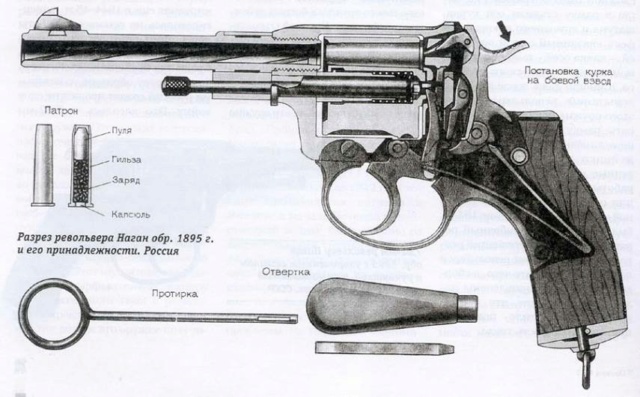
The M1895 by contrast, has a mechanism which, as the hammer is cocked, first turns the cylinder and then moves it forward, closing the gap between the cylinder and the barrel. The cartridge, also unique, plays an important part in sealing the gun to prevent the escape of propellant gases. The bullet is deeply seated, entirely within the cartridge case, and the case is slightly reduced in diameter at its mouth. The barrel features a short conical section at its rear; this accepts the mouth of the cartridge, completing the gas seal. By sealing the gap, the velocity of the bullet is increased by 15 to 45 m/s This feature also eliminates the possibility of injury from gases escaping through the gap, which can injure a finger if the user hold the gun with a finger positioned beside the gap.
The disadvantage of this design is that M1895 revolvers were time-consuming to reload, with the need to manually eject each of the used cartridges and reload one cartridge at a time through a loading gate. At the time the revolver was designed, this system was obsolete. However, the Nagant design did have the advantage of requiring less machining than more modern designs.
History and usage
The M1895 revolver was used extensively by the Russian Imperial Army and later by the Soviet Union after the Russian Revolution. In Russian service, it was known for its extreme sturdiness and ability to withstand abuse. As one former Imperial Russian officer stated, "if anything went wrong with the M1895, you could fix it with a hammer".
It was widely employed by the Bolshevik secret police, the Cheka, as well as its Soviet successor agencies, the OGPU and NKVD. Seven Nagant revolvers were used by communist revolutionaries to execute the Russian imperial family and their servants in July 1918. The M1895's sealed firing system meant that the revolver, unlike most others, could make effective use of a sound suppressor. Suppressed M1895 revolvers, modified in clandestine workshops, also turned up in the hands of Viet Cong guerrillas during the Vietnam War as assassination weapons.
2.Box and contentThe box is straight forward cardboard fully in line with what HWS normally does.
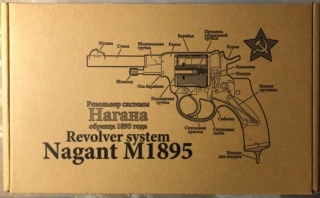
Cardboard with a black print, looking good but not a protection for rough shipping
Content is as expected: model, 7 cartridges and instructions

Lets now have a quick look at the instructions
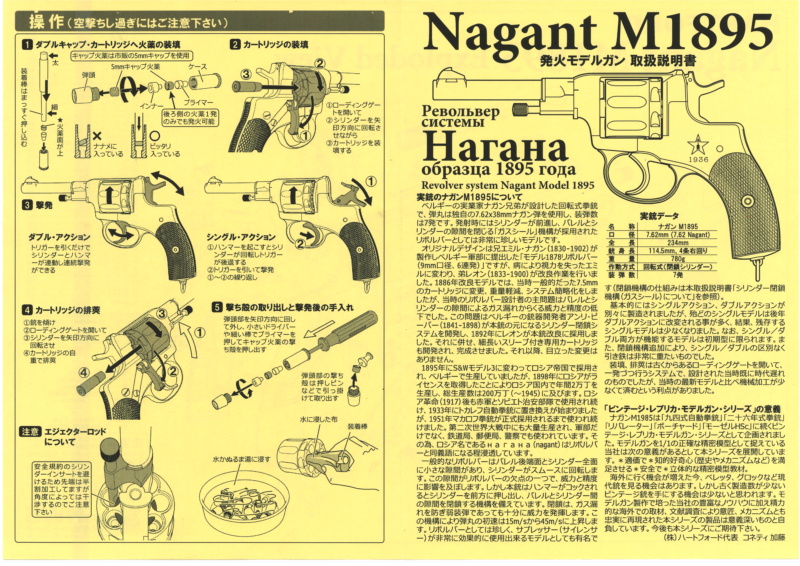


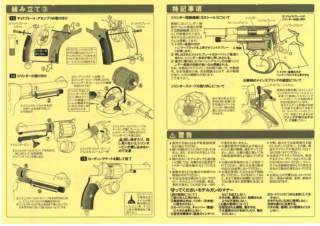 3.Look
3.LookFor the look of the box I guess it is an individual matter, but its basic and simple, a really nice top print that fine supports the authentic brown vintage look.

 4.Markings
4.Markingsthis model doesn’t have that many markings
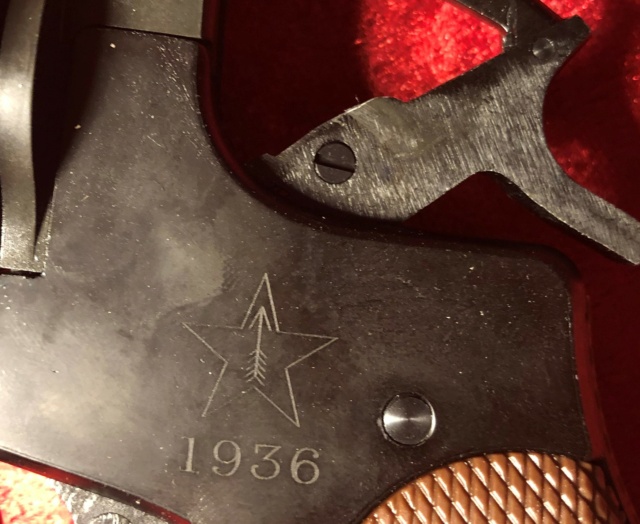
star and year of manufacture – the arrow indicate manufacture at Tula arsenal
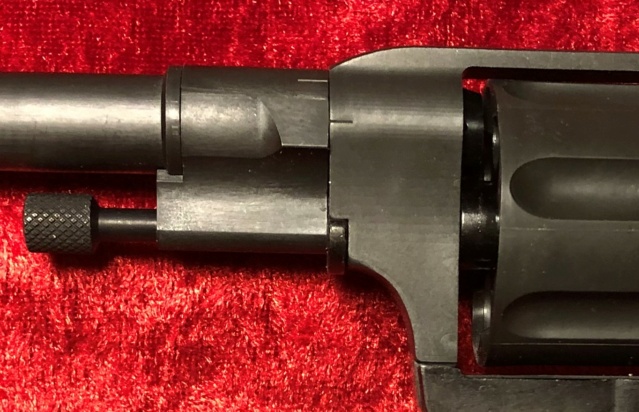
only other marking on the model is the 2 small lines also on LH side of the barrel– I don’t know if they were on the original gun hit are really practical for field stripping
I will touch the function later in the chapter on stripping.
No serial number or proof markings
5.WeightThe model gun and 7 cartridges weighs 490gr. The real gun empty weigh 800gr.
60% of the real steel gun. For a non metal model gun I figure its ok HW
6.StripdownStripping of the Nagant is a little special
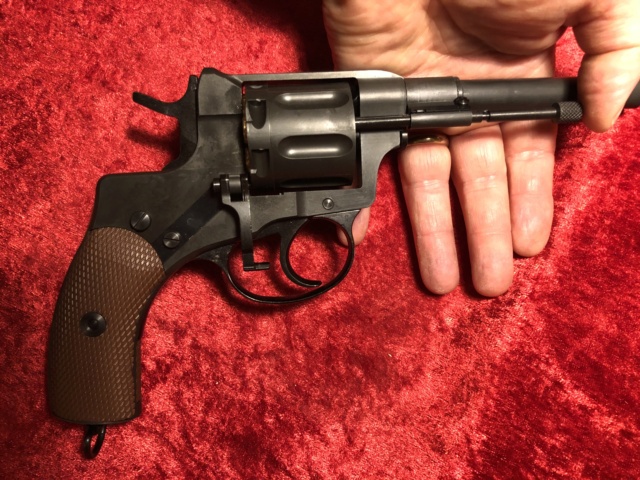
Empty cylinder, lower hammer
Turn the ejection rod and pull it forward. Rotate ejection rod module to line up exactly with markings on frame
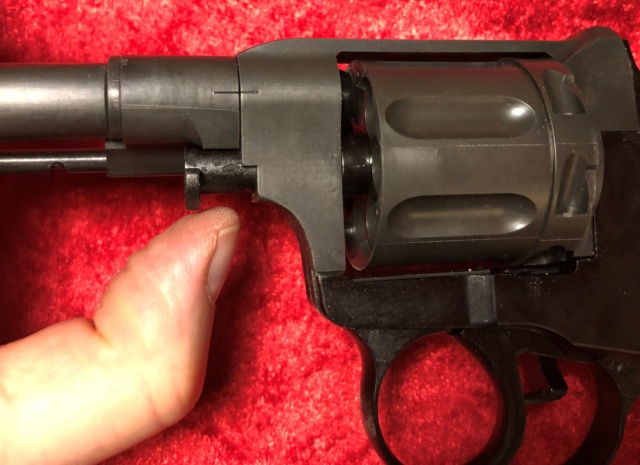
Remove cylinder pin forward

Open loading gate remove cylinder to right

For disassembling internal mechanism remove bolts on RH side and remove LH side plate. Take care of all springs and levers
When reassembling place cylinder in frame and press gently on the cylinder bushing letting cylinder fall in place.
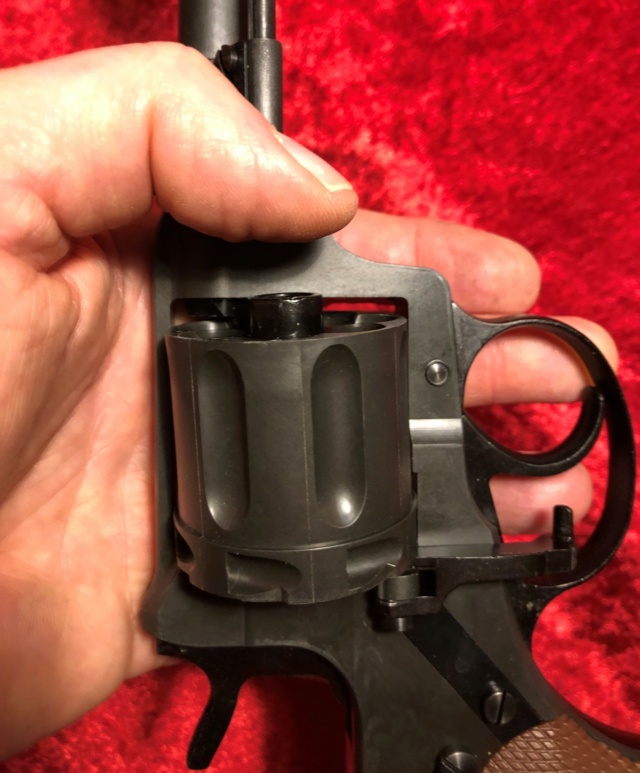
Align extractor and remount cylinder shaft.
Re align extractor and close loading gate
Job done ready to load up
7.Magazine & loadingIn 1895 the revolver is still the main handgun. OK this is not a “hand cannon” caliber but unlike the general trend this is a 7 shot cylinder.

can only be loaded trough the RH loading gate, no possibility for speed loader, moon clips or like – its one at a time.
Worse the same goes when emptying the cylinder. Ok there is a ram rod in the front assy but its one at the time backwards through the gate. To engage the rod it has to align precisely to pass by the cylinder blocking plate but I do consider this a small detail.
The model cartridges slide very easily in and out of the cylinder so the rod is not really needed.
8.Cartridges & fireDefinitely the norm that you cannot see a projectile protruding in the front of the case,
yeah this is normal on a capgun/PFC. But for this model is absolutely realistic look.

Model have a little leakfire from the gab between cylinder and barrel but a nice loud bang from the double cap loading
 9.Conclusion
9.ConclusionThis Is not a super heavy weight all metal semi and full auto fire model that just last away. This is a fine model of a small bore, technically very special revolver – what HWS is good at.
The model has a fine finish, function very well and have a most realistic look.
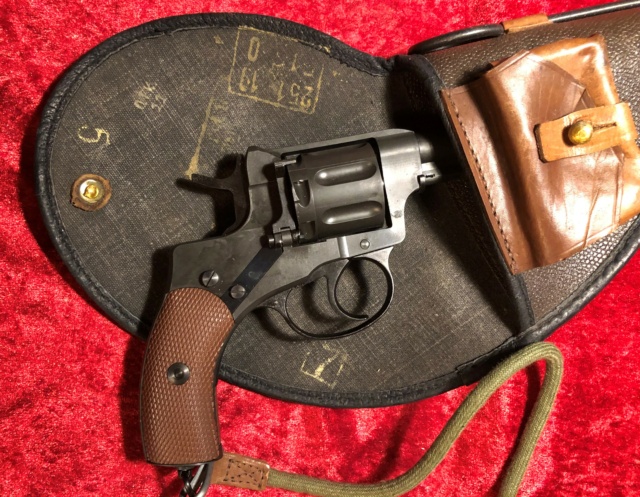
The Nagant gun was originally manufactured in both single- and double action. With the 1936 marking its most relevant and realistic to be a double action model
Lets just take a few more pictures of the beauty
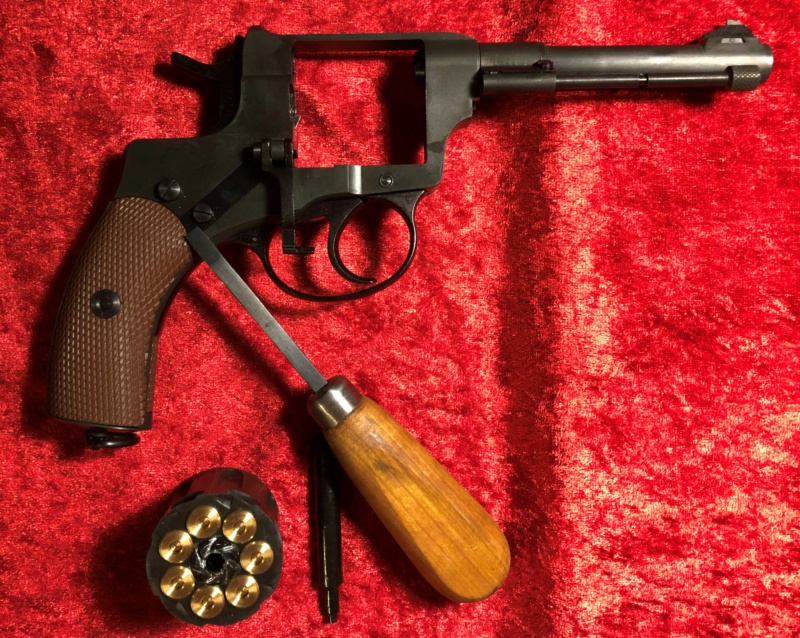

if I am to propose any improvement it would be to source a set of real steel wooden grip parts in the hope they can fit the model from HWS
For the modelgun collector interested in revolvers or Russian / soviet hand guns this is a must.
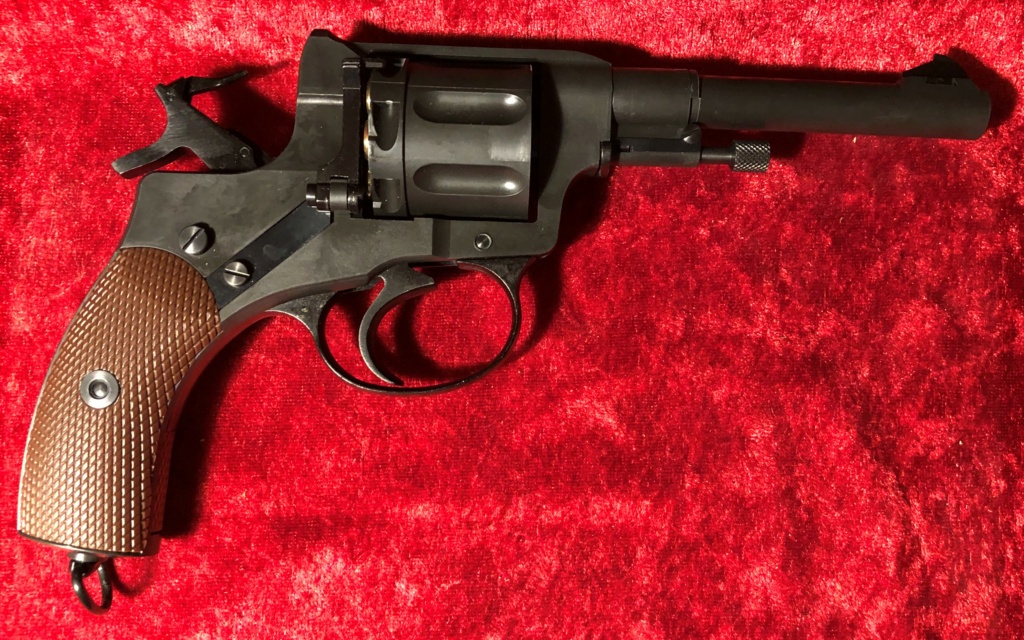
A fine addition to the Soviet collection
